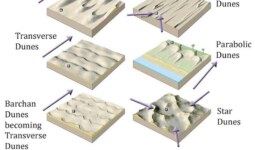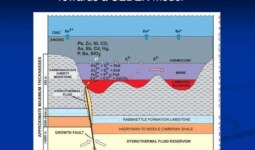Understanding Minerals, Metals, and Ores: Types, Formation, and Detailed Overview
Minerals, metals, and ores are essential to understanding the Earth’s composition and its resources. These terms are interconnected but have distinct definitions and characteristics. Let’s delve into their types, formation processes, and detailed properties, offering an in-depth perspective for students and professionals.
Minerals: Nature’s Building Blocks
Definition of Minerals
Minerals are naturally occurring inorganic substances with a specific chemical composition and crystalline structure. They are the fundamental units of the Earth’s crust and form through geological processes.
Characteristics of Minerals
Natural Origin: Found naturally in the Earth’s crust.
Definite Composition: Each mineral has a unique chemical formula (e.g., Halite: NaCl).
Crystalline Structure: Atoms are arranged in a repeating, orderly pattern.
Physical Properties: Minerals are identifiable by traits such as hardness, color, luster, and cleavage.
Types of Minerals
Silicate Minerals
Description: Contain silicon (Si) and oxygen (O) and make up about 90% of the Earth’s crust.
Examples: Quartz, Feldspar, Mica.
Formation: Form through the cooling of magma and lava.
Non-Silicate Minerals
Description: Do not contain silicon-oxygen compounds.
Categories:
Oxides (e.g., Hematite): Formed from oxygen and metal ions.
Carbonates (e.g., Calcite): Formed from carbon and oxygen ions.
Sulfides (e.g., Pyrite): Contain sulfur and metal ions.
Formation of Minerals
Minerals form through the following processes:
- Crystallization from Magma: As magma cools, minerals crystallize in a specific sequence based on temperature.
- Evaporation: Water evaporates from mineral-rich solutions, leaving behind mineral deposits (e.g., Halite).
- Metamorphism: High pressure and temperature transform existing minerals into new ones (e.g., Graphite to Diamond).
- Precipitation: Dissolved minerals precipitate out of solutions (e.g., Calcite in caves).
Metals: Elements with Utility
Definition of Metals
Metals are elements characterized by their ductility, malleability, and conductivity. They are typically extracted from ores and processed for industrial applications.
Characteristics of Metals
Luster: Metals have a shiny appearance.
Conductivity: Excellent conductors of heat and electricity.
Ductility: Can be stretched into wires.
Malleability: Can be hammered into thin sheets.
Types of Metals
Precious Metals
Description: Rare, valuable, and resistant to corrosion.
Examples: Gold (Au), Silver (Ag), Platinum (Pt).
Uses: Jewelry, investment, and electronics.
Base Metals
Description: Commonly used metals with industrial importance.
Examples: Copper (Cu), Zinc (Zn), Nickel (Ni).
Uses: Construction, electrical wiring, and manufacturing.
Ferrous Metals
Description: Contain iron as a major component.
Examples: Steel, Cast Iron.
Uses: Construction, machinery, and tools.
Non-Ferrous Metals
Description: Do not contain significant amounts of iron.
Examples: Aluminum (Al), Lead (Pb), Tin (Sn).
Uses: Lightweight applications and corrosion-resistant products.
Formation of Metals
Metals are derived from the Earth’s crust and are processed from ores. Their formation is associated with:
- Crystallization in Magma: Metals like chromium and nickel crystallize from magma in ultramafic rocks.
- Hydrothermal Processes: Hot, mineral-rich fluids deposit metals like gold and copper in veins.
- Sedimentary Processes: Metals like iron accumulate in layers, forming banded iron formations.
- Metamorphism: Heat and pressure can concentrate metals, forming deposits like graphite and garnet.
Ores: Nature’s Metal Reservoirs
Definition of Ores
Ores are naturally occurring rocks or sediments containing valuable minerals in concentrations sufficient for economic extraction.
Characteristics of Ores
Economic Value: Ores are mined for profit.
Metal Content: Contain valuable metals in significant amounts.
Gangue Minerals: Unwanted minerals (e.g., quartz, calcite) are often present.
Types of Ores
Oxide Ores
Description: Contain oxygen and metal ions.
Examples: Hematite (Fe₂O₃), Bauxite (Al₂O₃).
Formation: Formed through weathering and hydrothermal processes.
Sulfide Ores
Description: Contain sulfur and metal ions.
Examples: Galena (PbS), Chalcopyrite (CuFeS₂).
Formation: Formed in hydrothermal veins and volcanic environments.
Carbonate Ores
Description: Contain carbon and oxygen compounds.
Examples: Malachite (Cu₂(CO₃)(OH)₂), Dolomite (CaMg(CO₃)₂).
Formation: Formed in sedimentary environments.
Native Ores
Description: Contain metals in their elemental form.
Examples: Gold (Au), Silver (Ag).
Formation: Formed in hydrothermal veins or placers.
Formation of Ores
Ores form through a variety of natural processes:
- Magmatic Processes: Concentration of metals through magma crystallization (e.g., Chromite).
- Hydrothermal Processes: Metal-rich fluids deposit minerals in fractures and cavities (e.g., Gold veins).
- Weathering and Residual Processes: Chemical weathering enriches metals in residual soil layers (e.g., Bauxite).
- Sedimentary Processes: Metals accumulate in layers through sedimentation (e.g., Iron in banded iron formations).
This detailed breakdown provides clarity on the formation, types, and unique characteristics of minerals, metals, and ores. These distinctions are fundamental for understanding Earth’s resources and their industrial applications.




Leave a comment